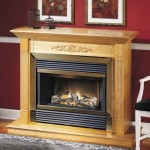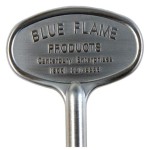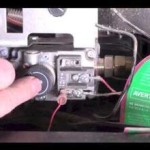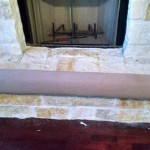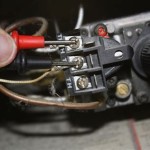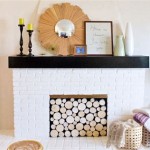Fireplace Fence for Babies: Ensuring Safety and Peace of Mind
A fireplace offers warmth and ambiance, especially during colder months. However, it also presents a potential hazard, particularly for young children who are naturally curious and exploring their environment. A fireplace fence, also known as a fireplace screen or safety barrier, is designed to create a protective boundary, preventing babies and toddlers from accessing the hot surfaces of the fireplace and minimizing the risk of burns or other injuries. This article will explore the key aspects of fireplace fences for babies, including their purpose, selection criteria, installation guidelines, and maintenance tips, all aimed at providing parents and caregivers with the knowledge needed to create a safer home environment.
Understanding the Primary Purpose of a Fireplace Fence
The core function of a fireplace fence is to act as a physical barrier, preventing children from getting too close to the fireplace. Fireplaces, whether wood-burning, gas, or electric, can become extremely hot, posing a significant burn risk. Even after a fire has been extinguished, the surfaces can retain heat for a considerable amount of time. Infants and toddlers, with their limited understanding of cause and effect, may not recognize the danger and could inadvertently touch the hot surfaces, resulting in painful and potentially serious burns. A well-chosen and properly installed fireplace fence mitigates this risk by creating a safe zone around the fireplace, making it inaccessible to children. The fence also helps prevent children from playing with fireplace tools, such as pokers or tongs, which could also cause injury.
Furthermore, a fireplace fence can protect children from potential hazards associated with falling embers or sparks from a wood-burning fireplace. Embers can easily escape the firebox and land on the surrounding floor, posing a fire hazard and a burn risk. A sturdy fence can help contain these embers, preventing them from reaching children or igniting nearby flammable materials. In addition to safety, a fireplace fence can also offer a degree of peace of mind for parents and caregivers, allowing them to relax and enjoy the fireplace without constantly worrying about the child's proximity to the heat source.
Key Considerations When Selecting a Fireplace Fence
Choosing the right fireplace fence requires careful consideration of several factors, including the dimensions of the fireplace, the age and mobility of the child, the style of the home, and the materials used in the fence's construction. A fence that is too small may not provide adequate protection, while one that is too large may be cumbersome and visually unappealing. It is essential to accurately measure the width and depth of the fireplace area to ensure that the chosen fence is appropriately sized.
The age and developmental stage of the child are also critical considerations. Younger infants may require a simpler, lower fence, while older toddlers who are more mobile and curious may need a taller and more robust barrier. The fence should be designed to prevent climbing, reaching through, or otherwise circumventing the barrier. The spacing between the bars or mesh of the fence should be narrow enough to prevent a child from squeezing through or getting their limbs trapped.
The materials used in the construction of the fireplace fence should be durable, heat-resistant, and non-toxic. Metal fences are a popular choice due to their strength and resistance to heat, but they can become hot to the touch. Wood fences can be aesthetically pleasing but may not be as heat-resistant as metal. Plastic fences are generally not recommended for use around fireplaces as they can melt or warp under high temperatures. Whatever material is chosen, it is crucial to ensure that it is free from lead, phthalates, and other harmful chemicals.
Finally, consider the style of the home and the aesthetic appeal of the fireplace fence. While safety is the primary concern, the fence should also complement the existing décor and not detract from the overall appearance of the room. Fireplace fences are available in a variety of styles, from simple and functional to decorative and ornate. Choose a fence that meets the safety requirements while also enhancing the visual appeal of the fireplace area.
Proper Installation and Maintenance for Optimal Safety
Even the best fireplace fence will not be effective if it is not installed correctly. Follow the manufacturer's instructions carefully and ensure that the fence is securely attached to the surrounding walls or floor. Some fireplace fences are freestanding, while others require mounting hardware. Mounting hardware provides a more secure and stable installation, especially for children who are prone to pushing or pulling on the fence. When installing a mounted fence, be sure to use appropriate anchors and screws that are suitable for the wall material.
It is crucial to regularly inspect the fireplace fence for any signs of damage or wear and tear. Check for loose screws, broken hinges, or bent bars. Any damaged components should be repaired or replaced immediately to maintain the integrity of the fence. The fence should also be cleaned regularly to remove dust and debris. Use a mild detergent and water to clean the fence, and avoid using harsh chemicals that could damage the finish or pose a health hazard.
Regular maintenance also includes ensuring that the area around the fireplace is clear of any flammable materials, such as rugs, curtains, or furniture. These items could easily ignite if exposed to sparks or embers. Keep a fire extinguisher nearby and ensure that it is in good working order. Familarize all members of the household with fire safety procedures, including how to use the fire extinguisher and what to do in case of a fire.
Furthermore, reinforcing safety measures with child education is key. Even with a fireplace fence in place, children should be taught about the dangers of fire and the importance of staying away from the fireplace. Explain to them that the fireplace is hot and can cause burns and that they should never touch it or play near it. Consistent reminders and supervision can help reinforce these lessons and promote safe behavior.
Selecting a fireplace fence with a self-closing and self-latching gate offers an added layer of protection. This feature ensures that the gate automatically closes and locks behind the person entering or exiting the fenced area, which is particularly helpful if parents are busy and forget to manually latch the gate each time. Regular inspection of the gate's mechanism is paramount to ensure it functions correctly. Check for any obstructions preventing smooth closure or latch malfunction. Addressing these issues immediately prevents accidental opening and maintains the intended safety barrier.
When choosing a fence, thoroughly research reviews and certifications. Look for fences that meet or exceed established safety standards, such as those set by ASTM International. Reviewing customer feedback regarding the fence's durability, ease of installation, and effectiveness in containing children provides valuable insight prior to purchasing. Prioritizing certified and well-reviewed models ensures a higher likelihood of acquiring a reliable and safe product.
Consider the portability of the fireplace fence if the fireplace is not used year-round or only used seasonally. Models that can be easily disassembled and stored when not in use offer flexibility, especially when space is limited. Portability allows for temporary relocation of the fence when the fireplace is not active, providing a less restrictive environment for the child. Ensure that disassembly and reassembly are straightforward and that all components are stored safely to prevent loss or damage.
Assess the fireplace hearth material. If the hearth is made of sharp-edged material, consider adding padding or edge protectors to the outside of the fireplace fence. This padding will provide an extra layer of safety should a child stumble or fall against the fence, minimizing the risk of bumps and bruises. Select padding that is non-toxic, fire-resistant, and easily cleanable.
The lifespan of a fireplace fence depends on usage, material, and maintenance. As the child grows and becomes more aware of danger, re-evaluate the need for the fence. If the child is consistently displaying safe behavior around the fireplace and understands the risks, the fence may eventually be removed. However, it is vital to ensure that the child's comprehension and maturity levels are sufficient before making this decision. Regular conversations about fireplace safety even after fence removal can contribute to long-term safe habits.

Foldable Black Metal Fireplace Fence Baby Dog Safety Gate Jaxpety

Fireplace Baby Gate 4 In 1 Child Safety Playpen 146 Inch 6 Panel Wide Barrier Pet Guard Metal Fence White Com

Vingli 120 Baby Gate Fireplace Safety Fence Guard Adjustable 5 Panel Metal Play Yard For Toddler Pet Dog Tree 4 Wall Mounts Configurable Black Com

Foobrues Around 0 0004 Acre Adjustable Safety Gate 8 Panels Play Yard Metal Doorways Fireplace Fence My23zhutui40 The Home Depot

Fireplace Safety

Up To 1 Off On Fireplace Fence Baby Safety F Groupon Goods

Veryke Pet Gate Safety Fireplace Fence Baby 6 Panel Play Yard For Kids Toddler Com

Foobrues Around 0 000258 Acre Adjustable Safety Gate 6 Panel Play Yard Metal Doorways Fireplace Fence My23zhutui39 The Home Depot

5 Panel Diy Foldable Metal Pet Playpen Baby Safety Gate Tree Fireplace Fence Stair Barrier Hearth Bbq Best Buy

Baby Proofing Checklist 40 Ways To Make Your Space Safe Freestanding Fireplace Proof Gate
Related Posts

